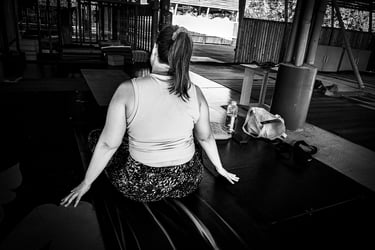Doing Nothing is a Lot of Work
Surprisingly, much of this background work involves muscle action. Your diaphragm and intercostal muscles keep your lungs expanding and contracting for breathing. The smooth muscles in your digestive tract push food through your system. Even when you're lying down, your postural muscles engage to support basic body positioning. And when we shift around after lying still for too long, it’s not just to get comfortable - our bodies do this to promote circulation, including the movement of lymph fluid, which depends on skeletal muscle movement for effective flow.
This is where regular, mindful movement comes into play. Exercise and practices that encourage even low-level muscle engagement are not just for athletes. They are fundamental for supporting metabolism and the endocrine system, which regulates hormones controlling energy, mood, and stress responses. For seniors, this becomes even more essential as metabolism naturally slows down with age. Gentle movement and breathwork keep the metabolism active without straining the body.
It is important to understand the signs of a healthy metabolism. Individuals with a well-functioning metabolism tend to maintain their weight without excessive fluctuations. They usually have consistent energy levels throughout the day and experience minimal fatigue. Efficient digestion is another key indicator, marked by regular bowel movements and optimal nutrient absorption. While this might sound like something only athletes strive for, maintaining these healthy signs is crucial for everyone, especially seniors.
Even when you’re just "hanging around" at home, your body is still hard at work. Breathing, digesting food, maintaining body temperature, and ensuring your heart keeps pumping all require energy. In fact, up to 60-80% of your daily energy use goes into these automatic processes. This baseline energy use is known as your basal metabolic rate (BMR), the cornerstone of a well-balanced metabolism.
A well-rounded daily practice, such as yoga, can make a significant difference. Gentle sequences, breath control, and relaxation exercises work together to keep muscles active, promote blood flow, and maintain hormone balance. For example, deep breathing (pranayama) activates the diaphragm and helps regulate cortisol, the stress hormone. Relaxation in poses like Savasana not only supports recovery but also aids the nervous system in staying balanced.
Movement also impacts the lymphatic system, which plays a role in immune function. Unlike the circulatory system, the lymphatic system has no central pump and relies on muscle contraction for lymph flow. Regular movement helps remove waste and circulate immune cells effectively, reducing fluid build-up and contributing to overall health.




More Insights
